Four thousand years is a fair old time for chickens to have been domesticated. They originate from the Red Jungle Fowl (Gallus gallus, a small pheasant of Asia) and have provided us with eggs, fresh meat and feathers plus some truly horrible traditional medicines. Domestic ducks are all descended from the lascivious ubiquitous mallard (Anas platyrhychos) with the exception of the Muscovy (Cairina moschata), which is a large duck native to Mexico, Central, and South America. The domestic geese from the tame and confiding Greylag (Anser anser) which in return for a little corn would have provided meat, eggs and excellent fletching for arrow flights from the moulted wing feathers when the bow was a common weapon. Turkeys originated in Central and North America and the various pretty colours come from the different subspecies ranging from Mexico up to New England.
Chicken provides 20% of the world’s animal protein at a reasonable price – what a huge debt the human race owes the humble domestic fowl. But don’t you want to know where your eggs and poultry meat have come from? Wouldn’t you like the thrill of producing and eating your own free-range fresh eggs? The taste and texture is something everyone should be able to experience. Truly fresh equals less than 24 hours old and a new laid egg is obvious when you find you have difficulty in cleanly peeling off the shell from a hardboiled egg – the white sticks to it. Having said that the staler egg is better for cake making as it produces more gas when cooking therefore lightening the texture. And what fun to have different coloured or sized eggs for different members of the family. If you are concerned about how industrial poultry is grown, you can even grow your own poultry meat: you know what it has been fed on, you know it has had a very good life and there is no stress at slaughter as the bird is in familiar surroundings. And the taste is magnificent – what need then for those spicy sauces, which are promoted to give supermarket chicken some sort of taste?
The popularity of poultry continues to increase, and even the newest and smallest farm parks and tourist attractions have a few fowl for added interest. When these are pure breeds, suitably labeled, it fuels the enthusiasm for others to take up the hobby. Not only is feeding made easier, there are many firms supplying suitable housing and equipment designed for the best welfare of the birds, and advances in veterinary research ensure that healthy stock is normal. Legislation concerning poultry tends to change with epidemics or scares and may apply both to commercial and backyard flocks. Records of poultry keeping go back centuries, but it is only since Victorian times that Standards have been written down for specific breeds. Survival of the fittest was definitely the main criterion in the past and breeds like the Old English Game fowl would have been bred true to type for hundreds of years. Five-toed fowls were mentioned in AD 50 and those with crests appeared in paintings and writings from the fourteenth century onwards.
After cock fighting was outlawed in England in 1849 the idea of exhibitions took root as a way of continuing the competition, but in a modified form. The first Standards were produced in 1865 for just a handful of breeds to try to maintain uniformity; it was not until the turn of the century and the importation of breeds from the continent and America that a volume of any size appeared. The Poultry Club has always been the guardian of the Standards, but the specialist Breed Clubs delineates the Standards themselves. None of the Standards have changed radically over the years, but slow changes have been introduced when necessary, following approval by the Poultry Club of Great Britain Board. It should not be easy to alter the Standards, because it is a human failing to tend towards the biggest or most exaggerated feature at the expense of the true type of a bird in order to win. This `fashion' can sometimes be instigated by judges and followed slavishly by those wanting to win at all costs. It would useful if some judges re-read the Standards occasionally and had them with them when they judged to check on the finer details of the breed to hand.
It is more difficult and takes a longer time to become a judge now, quite rightly. An aspiring judge may take only one judging test per year (written and practical examinations) and it then takes nine years to complete the various sections. Even then, a judge is expected to have kept and bred, as that is the true source of experience, as many breeds as possible if he or she wishes to attain the highest level of Panel A. The Breed Club shows are good training grounds, as there are always those around whose level of experience is higher and much can be learnt.
The Poultry Club, a registered charity, has a voluntary board of 16 elected members, a Chairman elected from the Council and an elected President. The Secretary is paid and part-time.



